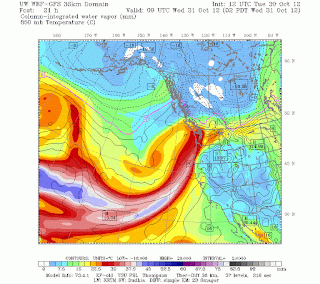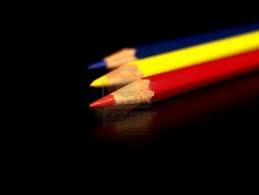Here is Part Two of our art classes aboard ships, doing world circumnavigations. (Part One is below) Secondary colours. Mixing two of the three
primaries at a time. Always a free
choice for use of the two first colours. Under their eyes, magic
took place. Blue with yellow results in
green. Red with yellow creates
orange. From blue with red, violet is
born. This is not a man-made, but universal
law. Let us now see how much
has been achieved thus far. Maximum results with minimum use of
material.
Our students worked with the three primary colours only: Red, Yellow and Blue, in all media: coloured pencil, oil pastel, watercolour and acrylic.
One ladder of eleven steps
with one colour, results in eleven colours.
Thus, red, yellow and blue (11 x 3) results in 33 colours. By creating the secondary
colours, another 33 colours = total 66.
Later on, there’ll be 11 more by mixing all three primaries (earth
colours), totalling 77 colours.
Our students had NO need for store-bought coloured pencil sets like this, they could create their own colours, in fact even more, on their own, using only the three primary colours.
You can see a pencil box
with many, many colours. Yet, even a beginner in our class has already created more
than in the store-bought box. A few even managed to get more. Also, there are two
“eco’s”: one is economic, the other ecologic.
By using only the 3 primaries, students learned to create and discover on their
own many more colours. Not just grab
them out of a retail box, which numbs
imagination and also will sap money later. We had an easel on which I
placed a rainbow image, and the Colour Wheel.
The exercise now was to create a rainbow, using only the three primary
colours and secondary colours. The previous colour exercises already contained
the rainbow and the spectrum, without students realizing it. Next exercise was creating a circle with the compass, and paint a Colour Wheel, as shown on the easel
with my example.

This took two full classes
of 90 minutes each, although some needed three classes, while a few were
diligent and did homework in their cabins. Bravo! Next class: Rainbow Fantasy. Anything goes, as long as the primary and
secondary colours are used. Next class: Earth
colours. By mixing all three
primaries, you get beautiful earth colours.
Here's an example of a student's work, creating Earth Colours (mixing 3 primaries together)
Start off with yellow (the lightest).
“Ah”s and “Oh”s were heard when they discovered the
outcome by mixing the 3 primaries. Next two classes: introduction
to Oil Pastels, and exercises as per example. Next class: watercolour
introduction. Here begins the daily routine of Natasha of providing fresh
water. Brush techniques, use of water, paper. Then make another Colour Wheel. There were three classes on this introduction. Secret of beautiful watercolour
painting: always use fresh water. Next: introduction to Acrylic.
Rainbow Fantasy creation from one of our students, using only the three primary colours
Technique, scales, mixing, awareness of drying time, working with water,
cleaning brushes (very important, to avoid ‘hockey sticks’, although this more
for watercolour brushes). And now we’re on our way,
after two months. Diligently following
instructions, the passengers were given different themes. For each we taped an
example before the class started so the pax. knew what the daily ‘plat du jour’ would be.
This bronze water buffalo with rider was a birthday present for Natasha, our "water buffalo" water carrier
Natasha was not only the “water
buffalo”, supplier and carrier, but always replaced stained with fresh, clear
water. A non-stop job. She also set up
and dismantled all the classes. Also her
calligraphy text for the easel board
was a great help. Three classes were devoted
to using any media they’d worked with so far, always using only the three
primary colors. Anything goes, as long
as they didn’t copy from postcards or other images. Except maybe something in black and white
that they could change into colour. Three days before arrival
and final disembarkation, we held an exhibition of our students that Natasha
and I had selected after asking each passenger to submit 2-3 creations of their
own choice. The exhibition was well
received. Those passengers who did not
participate in the art classes were very impressed, and a kudo from the Captain topped it all off and made us feel
proud: “A job very well done”.

Our legendary salty master, Captain Alf Morner, said "A job very well done."
First mission
accomplished. A dream come true. We pulled it off! Not only did the students
tap into their own imagination, but their eyes were opened to the magic and
mystery of colour. And you know
what? Upon return, they could actually
teach their own grandchildren.















